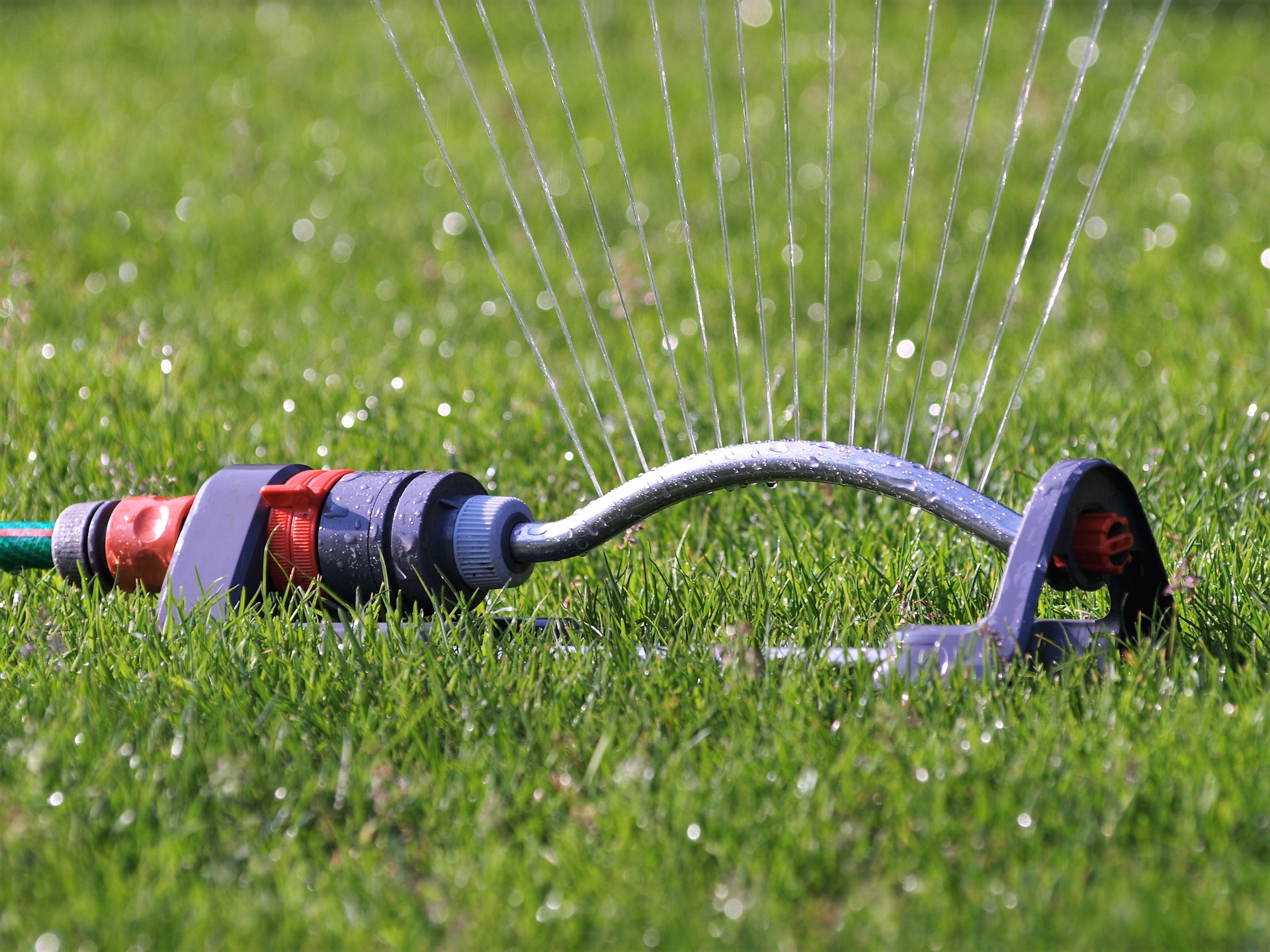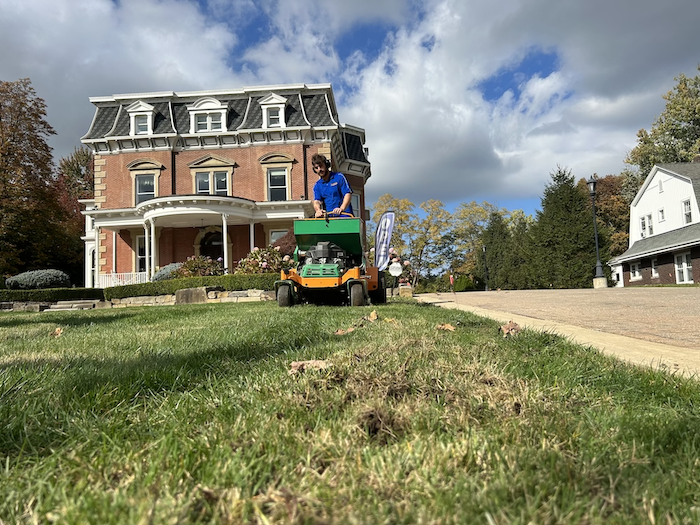/inspecting%20lawn%20close%20up.jpg)
4 Ways to Protect Your Lawn from Heat and Dry Spells This Summer
We tend to be lucky here in Northeast Ohio — nature usually gives us plenty of rain.
But everybody has occasional periods of heat and drought, and it’s easy to panic when your vibrant green lawn starts turning brown or it looks like your lawn is scorching. These struggles with managing your lawn in the heat can cause frustration when you see brown spots and burnt grass. What’s more is the uncertainty about proper watering and mowing can make you feel like you can’t do anything right.
But don’t worry; we have you covered.
The best lawn heat defense practices include:
- Mowing Tall To Keep Roots Shaded
- Watering Properly
- Embracing An Annual, Organic-Based, Fertilization Program
- Aerating And Overseeding To Thicken Your Lawn
All these smart lawn care habits encourage a strong, healthy lawn, and healthier, stronger lawns are better able to hang in there when the stress of heat and drought strike.
Let’s talk more about how to manage grass in the sun and how to keep grass green in hot weather, as well as how to save a lawn when the dry spells linger.
4 Best Lawn Heat Defense Strategies
A stressed lawn is not a happy lawn. And dry conditions can be stressful.
Summer’s dog days can really mess with how to keep grass green in hot weather, but these strategies can help keep that stress in check and give your lawn a better chance to survive through Mother Nature’s worst.
1. Mow Tall To Keep Roots Shaded
When temperatures get heated, your grass growth tends to slow down, too. In fact, you might notice you even have to mow less frequently.
While keeping your lawn on the tall side is smart throughout the growing season, it’s especially helpful to help prevent lawn scorching and drought stress.
Taller grass helps shade the soil and the lawn’s roots. This helps decrease the rate of moisture evaporation when your grass needs that moisture most.
When you mow, you’re removing a portion of leaf surface that creates food for your lawn through photosynthesis. Taking off too much starves and stresses your grass. You never want to remove more than one-third of the grass blade at any one time and you want to keep your mowing height to 3 to 4 inches.
Also, don’t skimp on sharpening those mower blades. Dull blades can rip the grass versus making nice, clean cuts, which helps the grass heal faster.
How to grow grass in the sun also means not mowing in the heat of the day. Mow when it’s cooler in the evening.
/lawn%20mowing%20height.jpg?width=1200&height=676&name=lawn%20mowing%20height.jpg)
2. Water Properly
Water is pretty essential when it comes to how to keep grass green in hot weather.
Even though this seems like a no-brainer, there are some big mistakes you can make that can weaken your lawn during heat and drought periods.
To ensure your grass receives the 1-2 inches of weekly water it needs, irrigate or run a sprinkler two to three times per week for approximately 15 to 20 minutes per zone. You want to provide your grass with a good soaking. If you water for just a few minutes, you won’t give your lawn’s roots the water they need to grow deeper.
Also, water during the early morning to reduce evaporation and prevent lawn diseases from arising.
Yes, when drought gets intense, your grass may turn brown. This is a natural defense mechanism where your lawn enters a dormant state but still retains moisture at the crown of the plants. Consistently sticking to your longer but infrequent watering schedule can ensure the plant’s crown stays moist and your lawn bounces back.
If you have an irrigation system, it never hurts to have it inspected to ensure it’s working like it should.

3. Embrace An Annual, Organic-based Fertilization Program
Fertilizing as part of a comprehensive, organic lawn care program is the best lawn heat defense for maintaining a healthy, thick lawn that can withstand heat and dry spells.
In fact, summer fertilization isn’t the most important time to get these nutrients delivered to your lawn. Spring and fall tend to be more crucial. In fact, fall fertilization boosts root growth, making your lawn stronger the following spring and summer.
/Live%20Website%20Images/technician-riding-fertilizer-2.jpg?width=1200&height=676&name=technician-riding-fertilizer-2.jpg)
4. Aerate And Overseed To Thicken Your Lawn
Two other annual practices that are key parts of a lawn heat defense strategy are aeration and overseeding.
Aeration, which is the process of pulling soil plugs from your lawn with an aerator, helps relieve compaction that happens in your lawn naturally over time from foot traffic and rainfall. You need to ease this compaction to ensure your lawn can receive oxygen, nutrients, and water at the root level.
After aeration, overseeding is great because it’s the ideal time to germinate grass seeds since aeration just created the perfect holes for those lawn seeds to settle into. This can help thicken your lawn, protecting the roots with shade to help them retain moisture when heat strikes.

Ready For A Strong, Healthy, And Drought-Proof Lawn?
You might not be able to control what kind of nasty heat or excessive dryness Mother Nature delivers during a Northeast Ohio growing season. But you can control how you maintain your grass during the rest of the year to ensure it is strong and can withstand these extreme conditions.
We hope these suggestions help you protect your grass in sun. As you assess your lawn’s conditions, it’s OK if you feel a bit overwhelmed. We completely understand. It’s easy to feel like you don’t know what to do when you’re trying to figure out how to keep grass green in hot weather.
If you have questions or want to ensure you’re doing the right things, give Turf Pride a call. We can help your lawn get ready for heat and drought, so it can stay healthy and look great all season long.
/Turf%20Pride%20team%20posing%20in%20front%20of%20truck.jpg?width=1200&height=676&name=Turf%20Pride%20team%20posing%20in%20front%20of%20truck.jpg)
Want to improve your lawn’s health and help it stay healthy all year long? Turf Pride can help with lawn care services in Northeast Ohio. Get started today with a free quote. Together, we’ll customize a plan that gives you the most attractive lawn on the block.



